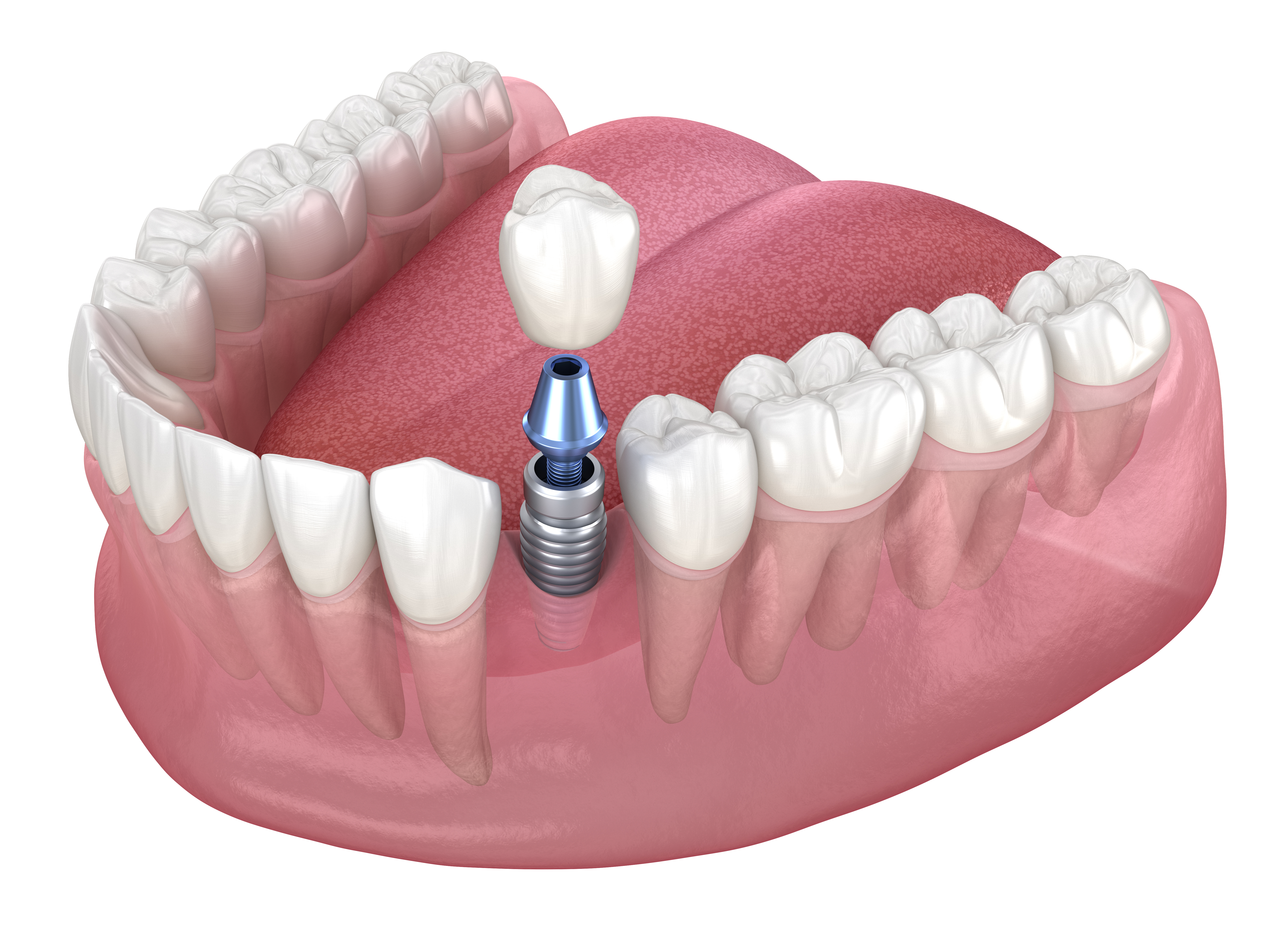Discover How Screwless Dental Implants Work and Their Benefits in the United States
Did you know screwless dental implants offer a highly aesthetic way to replace missing teeth while requiring careful hygiene and maintenance? These implants provide a natural look and feel, but proper care is essential to ensure their long-term stability and success.

Understanding Screwless Dental Implants and How They Work
Screwless dental implants involve a three-part system:
- Titanium implant post: Surgically inserted into the jawbone, this acts as an artificial tooth root.
- Abutment: Connects the implant post to the visible crown.
- Crown: The artificial tooth, which in screwless implants is cemented onto the abutment rather than screwed in.
The key distinction is that instead of access holes for screws being visible on the crown surface, the crown is secured with dental cement, eliminating screw holes and any visible metallic interruptions. This process creates a strong bond between the crown and abutment but does not compromise implant stability, as the implant post remains firmly fixed via its traditional screw anchorage in the jawbone.
Advantages of Screwless Dental Implants
- Optimal Aesthetics: The absence of screw access holes means a natural-looking tooth replacement. There are no dark spots or screw holes visible on crowns, which is especially valuable when replacing upper front teeth, commonly known as the “social six.”
- Simplified & Faster Procedure: Cementing crowns tends to be quicker and less technique-sensitive than aligning screw-retained crowns, potentially reducing chair time. Some clinics abroad even promote same-day crown placement with screwless implants.
- Reduced Risk of Screw Loosening: Unlike screw-retained implant crowns, which occasionally experience screw loosening, cement-retained crowns avoid this mechanical issue.
- Natural Functionality: Patients may experience chewing and speech restoration comparable to other implant types.
Candidacy and Suitability for Screwless Implants
Ideal candidates for screwless dental implants in 2025 generally share these characteristics:
- Good Oral Hygiene: Maintaining excellent dental care is critical to help prevent complications related to residual cement.
- Adequate Jawbone Density: Sufficient bone structure is required for successful implant integration.
- High Aesthetic Priorities: Patients prioritizing a seamless, natural-looking smile—especially for visible anterior teeth—may benefit most.
- Healthy Gum Tissue: Healthy soft tissues help minimize risk of inflammation or peri-implantitis associated with cement remnants.
Patients with compromised gum health, poor oral hygiene, or limited jawbone volume may not be suitable candidates for screwless implants due to increased risks.
Risks and Maintenance Considerations
While screwless implants excel aesthetically, they require meticulous attention to cement management and hygiene:
- Excess Cement Risks: If dental cement is not precisely applied or completely removed around the gum line, it may cause inflammation, tissue irritation, or peri-implantitis (infection around the implant). These risks necessitate a dental professional’s careful handling during placement.
- Diligent Oral Care: Patients should commit to brushing twice daily with a soft toothbrush, flossing with implant-specific tools, and using antimicrobial mouth rinses to maintain gum health.
- Regular Professional Monitoring: Routine dental visits are essential to detect early signs of inflammation or complications due to cement residue or plaque buildup.
- Complex Removal & Repair: Unlike screw-retained crowns that can be removed easily by unscrewing, cemented crowns must often be sectioned or cut to access the implant, necessitating new crown fabrication after removal. This makes thorough planning and precision during the initial procedure especially important.
Treatment Process Overview
The typical treatment steps for screwless dental implants in 2025 include:
- Initial Consultation and Assessment: Comprehensive clinical exams, including imaging and oral health evaluation—focusing on bone density, gum health, and aesthetic goals.
- Implant Placement Surgery: Titanium posts implanted in the jawbone under local anesthesia.
- Healing Phase: Allowing 3 to 6 months for osseointegration (bone bonding to implant).
- Impression and Crown Fabrication: Creating the custom crown tailored to color, shape, and appearance preferences.
- Cementation of the Crown: Crown is bonded onto the abutment with dental cement, ensuring no screw access holes.
- Follow-up and Long-term Maintenance: Scheduled visits for cleaning and monitoring, plus daily personal hygiene practices.
While some dental tourism providers in countries like Turkey promote same-day cemented crowns, most US dental specialists prefer staged approaches emphasizing durability and long-term success.
Cost Considerations for US Patients in 2025
The cost of screwless dental implants in the United States generally aligns with or exceeds the price range of traditional screw-retained implants due to the high standards of materials, advanced technology, and comprehensive aftercare used by reputable US dental providers.
- Typical price range: $3,000 to $5,000 per tooth, including implant placement, abutment, and crown.
- Insurance coverage: Some dental insurance policies may cover partial costs; patients should check with providers regarding implant-specific plans.
- Considerations about lower-cost foreign providers: Although dental tourism clinics abroad may offer lower fees and faster treatment via screwless implants, UK and Australian dental experts advise caution due to potentially rushed procedures and higher risks of complications. US patients are encouraged to seek experienced implant dentists with established success rates and transparent care protocols.
Considerations When Choosing a Screwless Implant Provider in the US
While specific US-based screwless implant brands or clinics are less documented, favorable outcomes generally arise from:
- Experienced implant dentists with proven clinical success.
- Clinics that prioritize thorough assessment, personalized treatment planning, and patient education on maintenance.
- Use of high-quality dental cement materials selected to match individual gum sensitivity and bite forces.
- Comprehensive follow-ups to monitor gum health and implant function.
Consult with licensed US implant specialists who uphold the latest guidelines and technological advances to ensure both aesthetic considerations and functional longevity.
Screwless dental implant solutions in 2025 can offer aesthetic advantages and simplified bonding procedures for patients especially focused on a natural, flawless smile. They are notably applicable for replacing front teeth where visual appearance is important. However, they require excellent oral hygiene, precise cement handling, and acceptance of potentially more complex crown repairs if needed. US patients considering this option should consult with trusted, experienced implant practices providing individualized planning and rigorous follow-up care. The balance of cosmetic benefit against maintenance requirements and procedural nuances should guide individual decisions.
For those seeking detailed information and guidance regarding screwless dental implants, professional consultation with implant specialists in the United States is recommended to confirm candidacy and receive tailored treatment planning for lasting tooth replacement in 2025.
Sources
- https://radiantsmiles.com.au/screwless-dental-implants/
- https://maidasmiles.co.uk/blog/the-truth-about-screwless-dental-implants-what-uk-patients-should-know/
- https://maryleboneimplantcentre.co.uk/can-you-get-screwless-dental-implants/
Disclaimer: All content, including text, graphics, images and information, contained on or available through this web site is for general information purposes only. The information and materials contained in these pages and the terms, conditions and descriptions that appear, are subject to change without notice.



